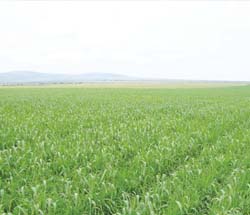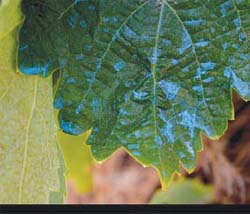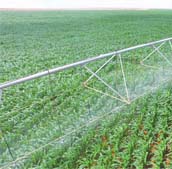Powdery Mildew in Cereal Crops
 Powdery mildew, caused by the fungus Blumeria graminis, is one of the most common and damaging foliar diseases in wheat. Powdery mildew exists almost everywhere wheat is grown. As an obligate parasite, the fungus grows only on living tissue.
Powdery mildew, caused by the fungus Blumeria graminis, is one of the most common and damaging foliar diseases in wheat. Powdery mildew exists almost everywhere wheat is grown. As an obligate parasite, the fungus grows only on living tissue.
Powdery mildew is particularly a problem in regions with high nitrogen fertilization and high stand densities. Cool, moist weather conditions with high relative humidity – 97 to 100 percent – enhance germination of the fungal infection. Optimum temperatures for development of powdery mildew are 59 to 70 degrees F, typically making it the first leaf disease of the season. When temperatures climb above 77 degrees F, powdery mildew begins to deteriorate.
Powdery mildew is characterized by white, cottony patches (colonies) of mycelium and conidia (asexual spores) on the surface of the plant. They can occur on all aerial parts of the plant, including stems and heads, but are most conspicuous on the upper surfaces of lower leaves. The white colonies later turn dull gray-brown.

 Irrigation development is one strategy the government can use to improve food security in Kenya. Lessons from irrigated maize production studies show that it is profitable and that Galana Kulalu food security project has the potential to produce about half of the country’s food requirement contributing significantly to food security and the GDP through the incomes earned. However, high costs due to inefficient use of fertilizer, water and land are the major cost factors that have caused doubts and low level engagement in irrigated maize production.
Irrigation development is one strategy the government can use to improve food security in Kenya. Lessons from irrigated maize production studies show that it is profitable and that Galana Kulalu food security project has the potential to produce about half of the country’s food requirement contributing significantly to food security and the GDP through the incomes earned. However, high costs due to inefficient use of fertilizer, water and land are the major cost factors that have caused doubts and low level engagement in irrigated maize production.